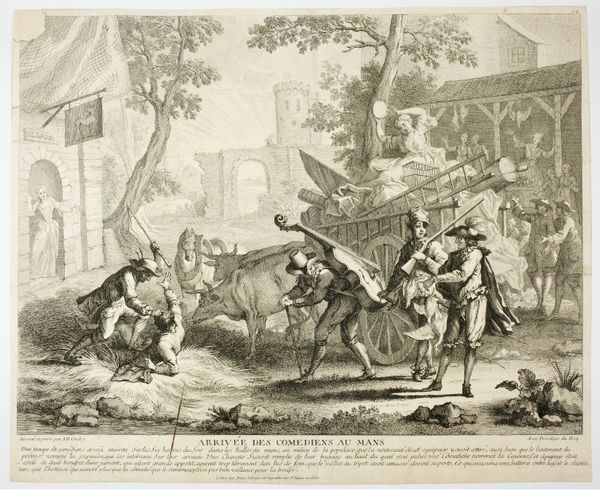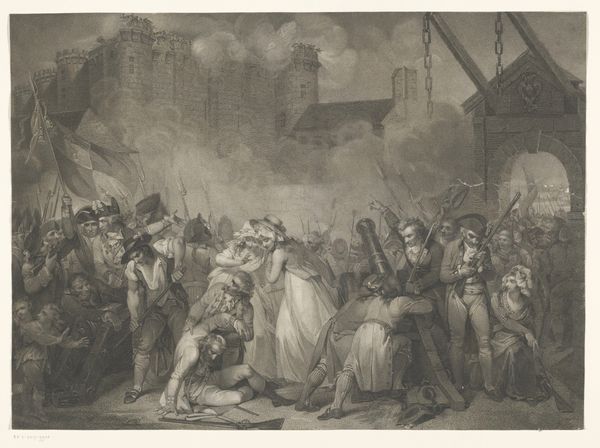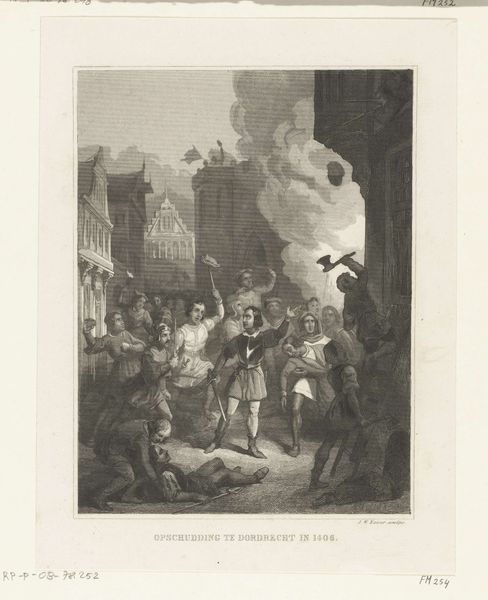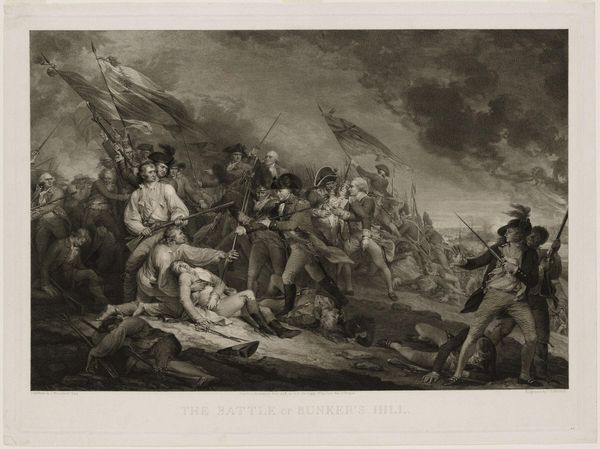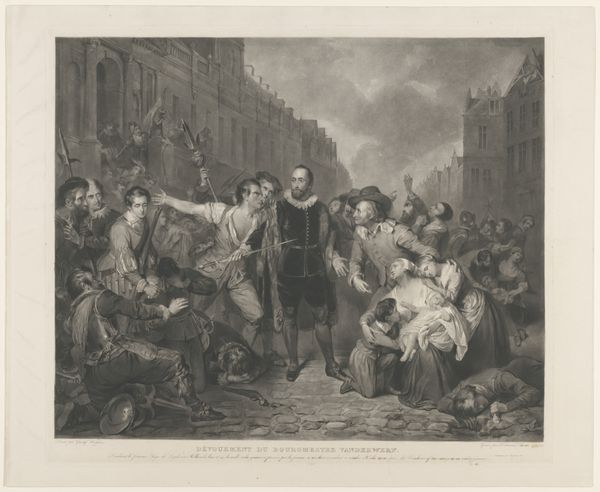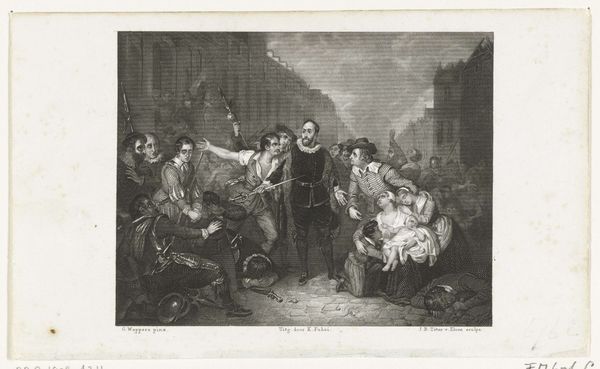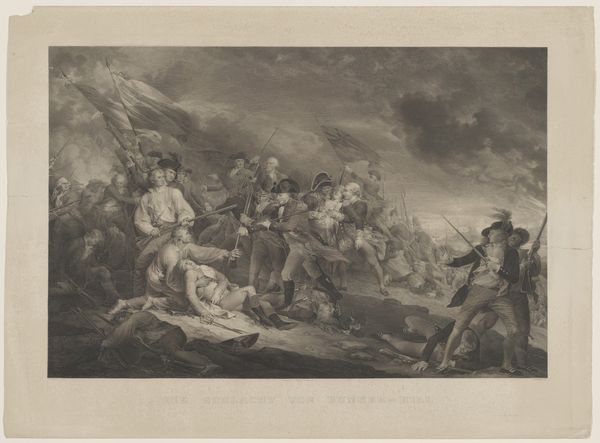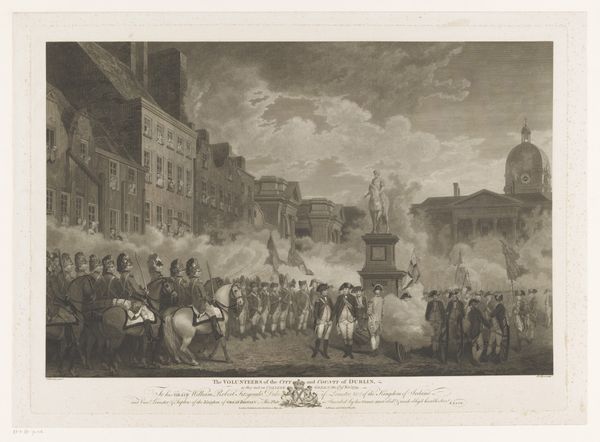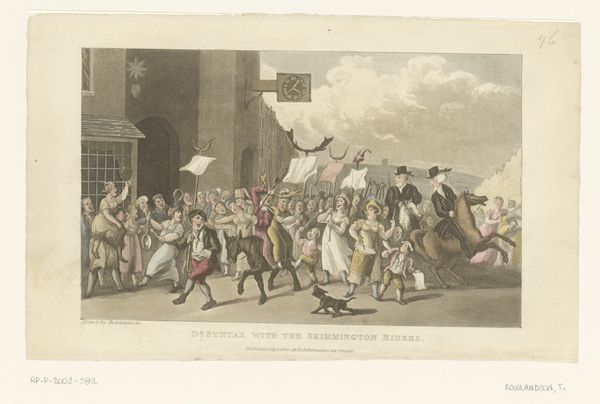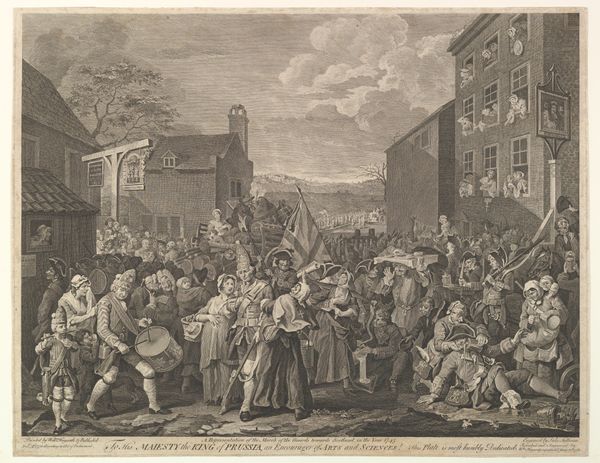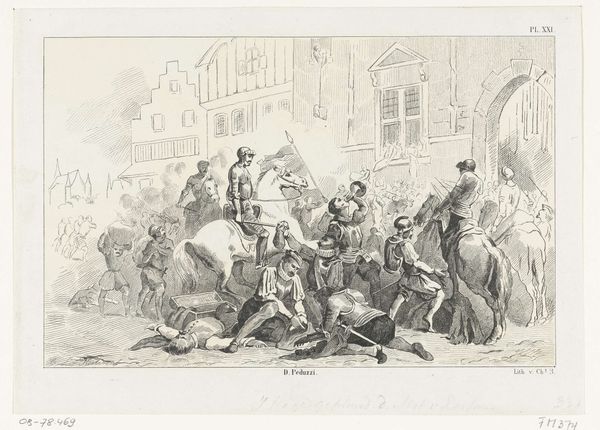
print, engraving
#
narrative-art
# print
#
classical-realism
#
group-portraits
#
romanticism
#
history-painting
#
engraving
Dimensions: height 661 mm, width 816 mm
Copyright: Rijks Museum: Open Domain
Curator: Before us we have "The Death of Major Francis Pierson" created by James Heath around 1796, an engraving. Its complex composition really catches the eye. Editor: It does! I'm struck by the dynamism. The artist has really captured a moment of chaos and heightened emotion through dramatic use of light and shadow. Curator: Heath’s work, echoing Copley's dramatic history painting, portrays the historical event in Jersey in 1781 during the French invasion, when the young Major Pierson was killed while leading the British to victory. Note how the figures are arranged almost like a stage play. Editor: Indeed. There’s a theatrical quality. Consider how the central figure of Major Pierson, struck down yet defiant, echoes classical depictions of heroism. His stance, surrounded by action, anchors the visual narrative. The faces of those nearby range from shock to determination. The Black soldier taking charge. Curator: It's interesting you mention that the heroic Black soldier leads onward immediately after Pierson is killed. In many ways this print tries to cement a view of the colonial history by emphasizing not just valor and duty, but crucially loyalty, while in actuality there were constant slave rebellions occurring during the period throughout all of the British colonies, including Jamaica. Editor: So the artwork aims for more than mere visual representation; it strives to convey specific political and moral values prevalent during its time, through strategic compositional choices. Look at the buildings on either side "framing" the scene while smoke adds drama but somewhat blurs details that don't fit the narrative, heightening the focus. Curator: This "blurring" is no doubt intended to idealize what was obviously an incredibly fraught historical period. It's a deliberate sanitization through romanticized symbols of valor. That brave child. The mourning figures on the right are visual symbols meant to move and sway popular opinion. Editor: Fascinating. Analyzing the print's symbolic weight gives insight into the artist's choices and intentions. Curator: A reminder that images have long been imbued with cultural and political force! Editor: Yes, beyond aesthetic preferences, there are choices and strategies at work that shape the artwork's cultural influence.
Comments
No comments
Be the first to comment and join the conversation on the ultimate creative platform.
